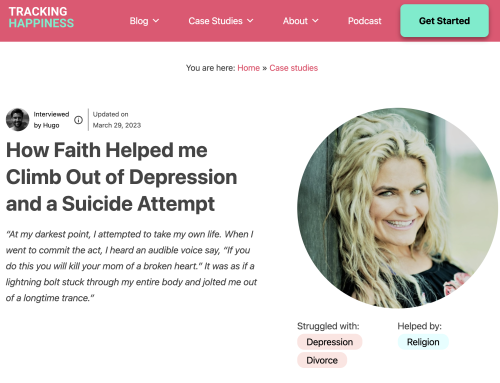This Guided Night Walking Meditation Will Clear Your Mind Before Bed
As a certified yoga therapist, I often prescribe walking – both day and night for therapy and meditation. Taking time to move in nature, breathe fresh air, and declutter the mind is necessary for everyone. Walking can calm the nervous system and bring tranquility into a chaotic day.
I work with those who suffer from extreme anxiety, PTSD, C-PTSD and complex trauma. Night walking is the perfect meditation as it calms the nervous system and balances the brain’s hemispheres.
Think of night walking as a meditation in motion.
Once done, their night walking meditation may feel entirely different as toxins (and other junk) have been forced out of the physical and mental body.
What Is Night Walking?
The benefits of night walking can be felt on every level: physical, mental, emotional, and spiritual. At night there is a lot less stimulation and chaos. The senses are more in tune with nature and natural sounds.
Night walking is similar to Restorative Yoga. It is the “rest-and-digest” response of moving meditation. Imagine how you feel after a good meal. You are satiated and at ease. Your parasympathetic and sympathetic nervous systems are balanced and calm.
Typically, a day walk can include the smell of exhaust or smog. Sights can include lots of colors and movement from people and automobiles. Sounds can be loud and overwhelming. One is vulnerable to overstimulation and distressing the systems.
At night, smells are more natural – smoke from a chimney, fragrant food, or the scent of dryer sheets lingering. Sights and colors are more subdued and far fewer. There is less movement in general, less overwhelm.
Sounds are subtle and clear, like the bark of a dog or the brush of the wind. Our senses are heightened. Again, much like Restorative Yoga there is a lack of stimuli. And in our modern world, our systems need less stimulation.
Try This Step-By-Step Guided Night Walking Mindfulness Practice:
The following meditation can be done prior to walking or during your night walk. This meditation will allow you to practice mindfulness as you night walk.
Part of any walking meditation is to be present and mindful as you walk. So truly tune into the sights, sounds, and smells that surround you.
Do not walk with ear buds or air pods. For now, read and then go practice – all while listening to the sounds of nature only.
1. Visualize
Imagine the clothing that feels best on your skin and keeps you at your perfect temperature. Visualize slipping on the soft, warm socks you love or the shoes that make you feel like you’re floating. Mindfully choose your favorite.
2. Become Aware
Mindfully turn the doorknob and step out into the cool of the evening.
3. Take a Deep Breath
Before moving forward, inhale through your nose to feel grateful for this day. Exhale out of your mouth with noise, creating space for this night walk.
4. Choose a Path
There is no hurry as you begin to walk your chosen path. On this path, you have the ability to choose which way you want to go. Simply choose wherever your head or heart nudges you. There isn’t a wrong way.
Once you choose the path, don’t look back or regret anything. Move forward in your choice – embrace and enjoy.
5. Draw Your Awareness to Your Breath
If to-do lists or agendas pop up, focus in on your breath. If your mind continues to chatter and keeps inviting you to the party, exaggerate your breath.
Elongate your inhalations and lengthen your exhalations. Begin to focus and trace the pathways of the breath.
6. Listen
Tune your ear to the sounds around you. What do you hear? Near? In the distance?
7. Look
What do you see? Near? In the distance?
8. Smell
What do you smell? Imagine the scene around the scent.
9. Feel Sensation
Notice your feet as they take each step, remembering there is no hurry here. How do you step? Gentle? Heel to toe? The whole foot? Simply notice what you notice with each step.
10. Bring Awareness to Your Legs
Turn your focus to your legs. Breathe with gratitude for where they have taken you, what they have brought you through, and their ability to take you anywhere in the world.
Imagine where you want to walk someday. Is it a beach in a distant land? A rugged forest or mountaintop? Inhale gratitude for the strength and ability of your legs.
11. Bring Awareness to Your Hips
Notice your hips and core working as one unit to move your legs, change directions, and connect your torso and legs. Simply notice with each stride.
12. Bring Awareness to Your Arms
Notice if your arms swing or don’t move as you step. Can you feel the weight of your hands at the end of each arm? Press each finger to your thumbs as you walk.
Make a fist. Outstretch all 10 fingers actively. Shift from making a fist to stretching your fingers a few more times.
13. Bring Awareness to Your Mouth
Notice your neck, throat, jaw, and tongue. Is there any tension? If so, see if you can relax it.
Open your mouth as wide as possible, stick out your tongue as far as you can and exhale deeply.
14. Bring Awareness to Your Face
Notice the rest of your face – your eyes, nose, cheeks, forehead, ears, and crown. Is there any tension or stress? Can you relax each one?
Turn your head from side to side while walking. Then, look up and down a few times. Notice any sensations or any place that may need to release and surrender.
15. Bring Awareness to Your Shoulders
Raise your arms above your head. Feel your shoulder joint as you lower and raise again. Repeat this a few more times.
16. Take Notice
As you return home, notice your neighboring homes and the street that perhaps you have gone down a million times. Really notice it tonight.
17. Appreciate
Walking up to your home, notice something good or new about your dwelling.
18. Find Gratitude
Before turning your doorknob to return inside, look up at the sky, place your hands at the heart center with your palms together and inhale gratitude.
Final Things to Know About Night Walking
Before practicing (or referring to) any type of yoga, meditation, or physical activity, it’s good to know if there are any triggers or something that could cause stress to the system.
This could be city noise in the day or harmful memories if at night. As with anything, one person may find something therapeutic but to another, it could be detrimental.
Night walking can be a meditative and therapeutic activity but could cause extreme anxiety for a person who has been attacked or has other negative memories of this time of day.
But for most, night walking is extremely beneficial for both the body and the mind.
When we are able to step outside – literally and figuratively – from all the chatter and stressors in our daily lives with night walking, it can help us shift into a more positive, empowered, mindful, and healing state of being. And we can all benefit from this!
All included information is not intended to treat or diagnose. The views expressed are those of the author and should be attributed solely to the author. For medical questions, please consult your healthcare provider.







Leave A Comment